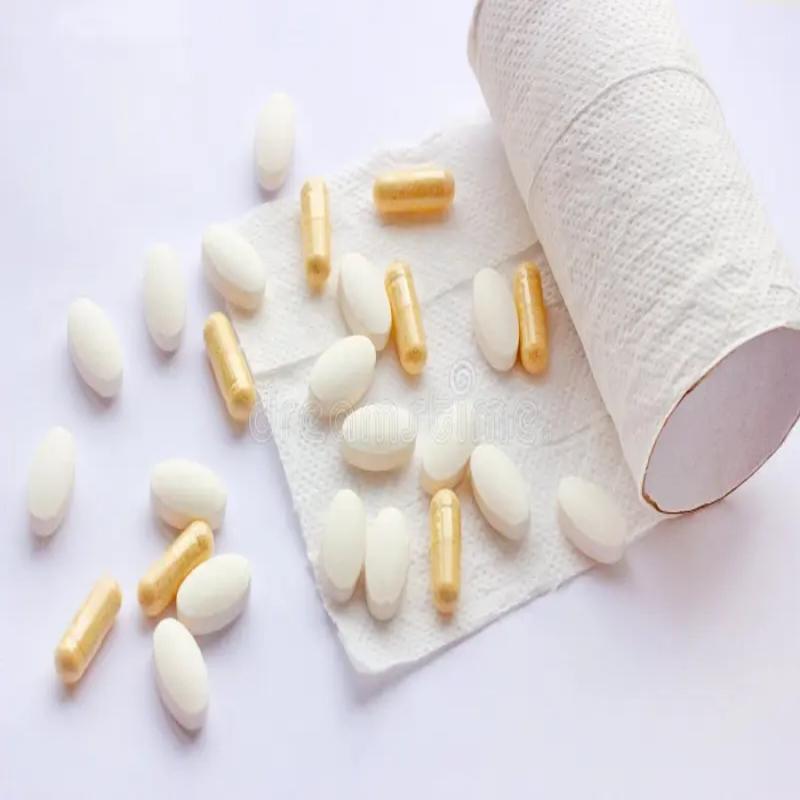A Brief Overview
Laxatives are substances that loosen stool and promote bowel movements. They work by either softening the stool, increasing intestinal fluid, or stimulating intestinal muscle contractions to move stool through the digestive tract faster. There are different types available with varying mechanisms of action.
Osmotic Laxatives
Osmotic work by retaining fluid in the intestines through an osmotic action. This leads to softer and bulkier stool, making it easier to pass. Common osmotic include:
- Polyethylene glycol (Miralax): It works by retaining fluid in the intestines through its inert, non-absorbable molecule. It draws fluid into the colon to soften stool. It is a gentle, non-habit-forming laxative.
- Lactulose: It is an synthetic disaccharide that is not digested by intestinal enzymes. Bacteria in the colon ferment it, producing acids and gas that draw water into the colon, softening stool.
- Magnesium- containing Laxatives (milk of magnesia, magnesium citrate): Magnesium pulls water into the bowel through osmosis, increasing bowel movement frequency. They tend to cause more adverse effects like abdominal bloating and cramping.
Bulk-Forming Laxatives
Bulk-forming laxatives add bulk to stool and make it softer. They include:
- Psyllium (Metamucil): It is a soluble fiber that absorbs water and forms a gel-like mass in the intestines. This bulky stool stimulates peristaltic contractions for easier bowel movements.
- Methylcellulose (Citrucel): It is also a soluble fiber that forms a gelatinous mass in the intestines to add bulk and moisture to stool.
- Calcium polycarbophil (FiberCon): It is a calcium salt of carboxymethylcellulose, which forms a gelling mass in the intestines to add softness and bulk to stool.
Stimulant Laxatives
Stimulant work by stimulating contractions in the intestinal walls. They include:
- Bisacodyl (Dulcolax): It works locally in the colon to stimulate fluid and electrolyte secretions as well as muscle contractions for faster transit of stool. It causes bowel movements 6 to 12 hours after intake.
- Senna (Senokot): It contains sennosides that stimulate nerves in the intestinal wall to induce contractions. It causes a bowel movement in 6 to 12 hours.
- Aloe (Smooth Move): Aloe latex acts as a stimulant laxative by irritating the intestinal lining to initiate peristaltic contractions. Effects are seen within 12-24 hours.
- Castor oil: It contains ricinoleic acid that irritates the intestinal lining to induce powerful contraction of intestinal muscles, causing a bowel movement within 6 hours.
Suppositories and Enemas
These are rectal preparations meant for immediate bowel evacuation. They include:
- Bisacodyl and glycerin suppositories: They dissolve and stimulate the intestines upon contact in the rectum to induce bowel movements within 15-30 minutes.
- Soapsuds or Fleet enemas: Soapsuds enemas introduce fluid into the rectum that stimulates defecation reflex. Effects are seen within 15 minutes.
When to Use Laxatives
They should only be taken when truly required to treat constipation and related symptoms. Some instances when laxative use may be warranted include:
- No bowel movement in 3 or more days.
- Hard, dry stools that are difficult or painful to pass.
- Abdominal bloating, cramping, discomfort due to constipation.
- After abdominal or pelvic surgery to prevent opioid-induced constipation.
- To clean the bowel prior to medical procedures like colonoscopy.
Safety Concerns with Laxative Use
While they bring relief from constipation symptoms, their long-term use or misuse can pose some risks:
- Dependence and loss of bowel control: Regular use can cause the intestine to become reliant on it for bowel movements.
- Electrolyte imbalances: Stimulant may cause hypokalemia from excessive potassium loss in stool if used long-term.
- Dehydration: Frequent use of saline could deplete fluids from the body over time.
- Bowel disturbances: Strong stimulants may cause abdominal pain, excessively watery stool and bowel spasms.
- Nutrient deficiencies: Long-term laxative dependence can impair nutrient absorption leading to deficiencies.
Hence, it is best to use laxatives only as needed under medical guidance in the minimum effective dose. Lifestyle changes emphasizing diet, exercise and stress reduction are preferable for long-term management of constipation. Prompt medical evaluation is advised in case of concerning symptoms, improper bowel habits or unresolved constipation.
For Deeper Insights, Find the Report in the Language that You want.
About Author:
Priya Pandey is a dynamic and passionate editor with over three years of expertise in content editing and proofreading. Holding a bachelor's degree in biotechnology, Priya has a knack for making the content engaging. Her diverse portfolio includes editing documents across different industries, including food and beverages, information and technology, healthcare, chemical and materials, etc. Priya's meticulous attention to detail and commitment to excellence make her an invaluable asset in the world of content creation and refinement. (LinkedIn- https://www.linkedin.com/in/priya-pandey-8417a8173/)
